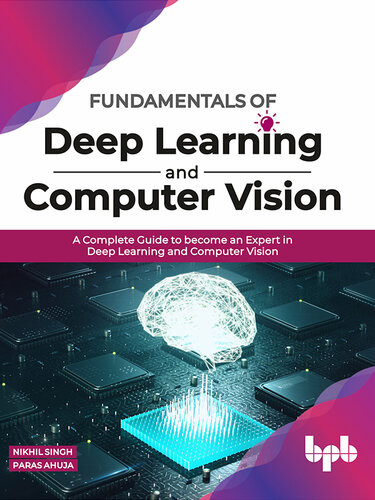

Most ebook files are in PDF format, so you can easily read them using various software such as Foxit Reader or directly on the Google Chrome browser.
Some ebook files are released by publishers in other formats such as .awz, .mobi, .epub, .fb2, etc. You may need to install specific software to read these formats on mobile/PC, such as Calibre.
Please read the tutorial at this link: https://ebookbell.com/faq
We offer FREE conversion to the popular formats you request; however, this may take some time. Therefore, right after payment, please email us, and we will try to provide the service as quickly as possible.
For some exceptional file formats or broken links (if any), please refrain from opening any disputes. Instead, email us first, and we will try to assist within a maximum of 6 hours.
EbookBell Team

4.3
58 reviewsDESCRIPTION
This book starts with setting up a Python virtual environment with the deep learning framework TensorFlow and then introduces the fundamental concepts of TensorFlow. Before moving on to Computer Vision, you will learn about neural networks and related aspects such as loss functions, gradient descent optimization, activation functions and how backpropagation works for training multi-layer perceptrons. To understand how the Convolutional Neural Network (CNN) is used for computer vision problems, you need to learn about the basic convolution operation. You will learn how CNN is different from a multi-layer perceptron along with a thorough discussion on the different building blocks of the CNN architecture such as kernel size, stride, padding, and pooling and finally learn how to build a small CNN model. Next, you will learn about different popular CNN architectures such as AlexNet, VGGNet, Inception, and ResNets along with different object detection algorithms such as RCNN, SSD, and YOLO. The book concludes with a chapter on sequential models where you will learn about RNN, GRU, and LSTMs and their architectures and understand their applications in machine translation, image/video captioning and video classification.
KEY FEATURES
Setting up the Python and TensorFlow environment
Learn core Tensorflow concepts with the latest TF version 2.0
Learn Deep Learning for computer vision applications
Understand different computer vision concepts and use-cases
Understand different state-of-the-art CNN architectures
Build deep neural networks with transfer Learning using features from pre-trained CNN models
Apply computer vision concepts with easy-to-follow code in Jupyter Notebook
WHAT WILL YOU LEARN
This book will help the readers to understand and apply the latest Deep Learning technologies to different interesting computer vision appli